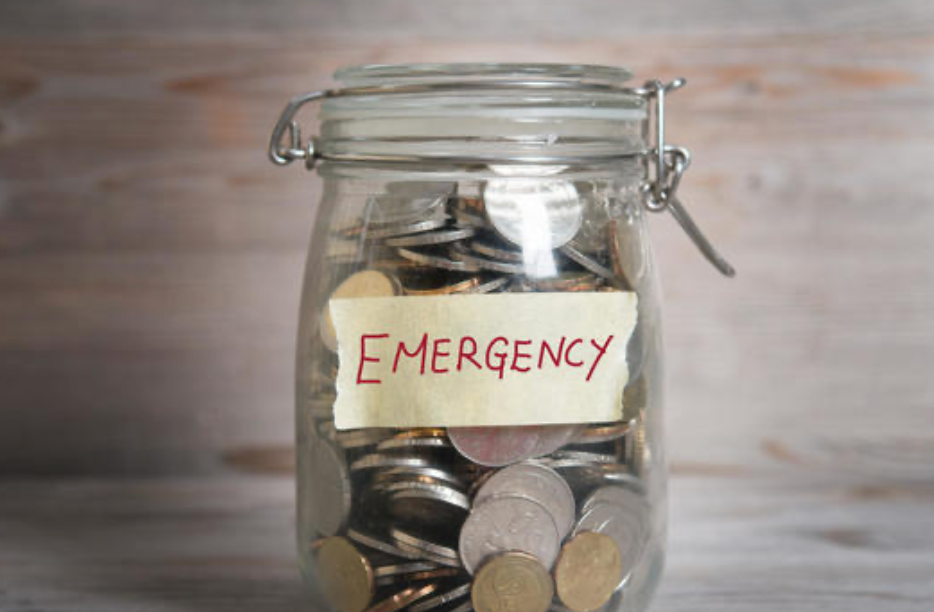Understanding Family Expenses and Emergency Expenses
Family expenses encompass the wide range of costs associated with maintaining a household and catering to the needs of family members. These can include regular monthly expenditures such as groceries, utility bills, mortgage or rent payments, and school fees. However, it's important to distinguish between regular family expenses and unexpected costs that may arise.

What Counts as Family Expenses?
Regular vs. Unexpected Costs
Regular family expenses are the predictable, recurring costs that form the foundation of your budget. These are the essential outlays required for day-to-day living and are typically planned for in advance. On the other hand, unexpected costs can catch you off guard and disrupt your financial stability. These may include sudden medical bills, home repairs, or car maintenance. It's crucial to differentiate between these two categories to effectively manage your finances.
The Nature of Emergency Expenses
Emergency expenses refer to unforeseen financial demands that require immediate attention. These could stem from situations like a medical emergency, unexpected travel, or urgent home repairs. Such emergency expenses can significantly impact your budget if you're not prepared for them. They often necessitate a reevaluation of your spending priorities and may lead to temporary financial strain if not managed effectively.

Building a Rainy Day Fund for Emergency Expenses
Life is full of unexpected twists and turns, and having a financial safety net in place can provide much-needed security when facing unforeseen emergency expenses. Establishing a rainy day fund is a proactive step towards safeguarding your family's financial well-being.
Why Saving Early Matters
When it comes to building a rainy day fund, starting early can make a significant difference. Even small, regular contributions can add up over time, providing a cushion for unexpected family expenses. By setting aside funds early on, you are better prepared to handle sudden financial challenges without disrupting your long-term financial goals.
Small Savings Add Up
It's easy to underestimate the impact of consistent small savings. Whether it's putting aside a portion of your monthly income or allocating windfalls like bonuses or tax refunds to your rainy day fund, these incremental contributions can accumulate into a substantial sum over time. This disciplined approach to saving ensures that you are better equipped to manage any unforeseen emergency expenses that may arise.
How Much Should You Save?
Determining the appropriate amount for your rainy day fund depends on various factors such as your monthly expenses, income stability, and potential emergency expenses. A common guideline is to aim for an emergency fund that covers three to six months' worth of living expenses. However, individuals with irregular income or higher financial obligations may consider saving even more to provide an additional buffer in times of need.
Calculating Your Emergency Fund Goal
To calculate your emergency fund goal, start by evaluating your essential monthly expenditures including housing costs, groceries, utilities, insurance premiums, and debt obligations. Multiply this total by the number of months you aim to cover (e.g., 3-6 months) to arrive at your target savings goal. This approach ensures that you have a clear objective in mind and helps track your progress towards achieving it.
Tips for Growing Your Rainy Day Fund
Growing your rainy day fund requires commitment and strategic planning. Here are some practical tips to help you bolster your financial safety net:
- Automate Savings: Set up automatic transfers from your checking account to your designated emergency savings account each month.
- Cut Unnecessary Expenses: Identify areas where you can trim unnecessary spending and redirect those funds towards your rainy day fund.
- Side Hustles: Explore opportunities for additional income through part-time work or freelance gigs.
- Windfall Allocation: Direct unexpected windfalls such as gifts or unexpected bonuses towards bolstering your emergency fund.
By implementing these strategies consistently, you can fortify your rainy day fund and gain peace of mind knowing that you are better prepared to navigate unforeseen financial challenges.
Exploring Emergency Loans: A Last Resort
When unexpected emergency expenses arise, and your rainy day fund may not be sufficient to cover them, emergency loans can serve as a valuable financial tool. Understanding the types of emergency loans available and their implications is crucial in making informed decisions about managing sudden financial needs.
Understanding Emergency Loans
Types and How They Work
Emergency loans come in various forms, including personal loans, payday loans, and credit card cash advances. Personal loans are typically unsecured and can be obtained from banks or online lenders. They offer fixed interest rates and repayment terms. Payday loans, on the other hand, are short-term, high-interest loans that are usually due on the borrower's next payday. Credit card cash advances allow you to borrow a portion of your credit limit in cash but often come with high fees and interest rates.
Each type of emergency loan operates differently and carries its own set of terms and conditions. It's essential to carefully review the terms, interest rates, and repayment schedules before committing to any form of emergency loan.
The Pros and Cons of Emergency Loans
When to Consider and What to Watch Out For
Emergency loans can provide immediate relief when faced with unexpected emergency expenses that cannot be covered by existing savings or alternative means. They offer quick access to funds without requiring collateral in most cases. However, it's important to weigh the advantages against the potential drawbacks.
Pros:
- Immediate Access: Emergency loans provide rapid access to funds during urgent situations.
- No Collateral Required: Most personal loans do not necessitate collateral, making them accessible for individuals without significant assets.
Cons:
- High Interest Rates: Many emergency loan options carry high-interest rates compared to traditional personal loans.
- Risk of Debt Accumulation: Depending solely on emergency loans for financial shortfalls can lead to long-term debt accumulation.
It's advisable to consider emergency loans as a last resort after exhausting other avenues such as savings, negotiation with creditors, or assistance from family and friends. Careful consideration of the associated costs is essential in determining whether an emergency loan is the most viable solution for managing unforeseen family expenses.
Alternatives to Emergency Loans
Other Options for Managing Sudden Expenses
While emergency loans can provide immediate financial relief, exploring alternative strategies for managing sudden emergency expenses is prudent:
- Negotiate Payment Plans: Contact service providers or creditors directly to negotiate extended payment plans or reduced instalments for outstanding bills.
- Utilize Community Resources: Seek assistance from local community organisations or non-profit agencies that offer financial aid programs or grants for individuals facing unexpected hardships.
- Liquidate Non-Essential Assets: Consider selling non-essential assets or items that are no longer needed to generate additional funds.
- Freelance Work: Explore opportunities for freelance work or part-time employment to supplement your income during challenging times.
By considering these alternatives alongside emergency loan options, individuals can make well-informed decisions based on their unique financial circumstances while effectively managing unexpected family expenses.
Practical Tips for Cutting Down on Family Expenses
Managing family expenses effectively involves strategic budgeting and smart spending habits. By implementing practical tips to cut down on regular outlays, individuals can create more financial flexibility and allocate resources towards building a robust emergency fund.
Budgeting for the Basics
Creating a comprehensive budget is the cornerstone of effective expense management. It provides insight into your income, expenditures, and savings goals, enabling you to make informed financial decisions.
Keeping Track of Spending
Start by tracking your monthly spending across different categories such as groceries, utilities, transportation, and discretionary purchases. Utilise budgeting apps or spreadsheets to monitor your expenses meticulously. This practice helps identify areas where you can potentially reduce costs and reallocate those funds towards essential priorities.
Smart Shopping and Saving
Adopting savvy shopping strategies can lead to substantial savings over time. By being mindful of deals, discounts, and do-it-yourself (DIY) approaches, you can maximise the value of every pound spent.
Deals, Discounts, and DIY
- Deals: Keep an eye out for promotional offers and discounts when making purchases. Whether it's groceries, clothing, or household items, taking advantage of sales events can result in significant savings.
- Discounts: Explore loyalty programmes offered by retailers or supermarkets to access exclusive discounts on everyday essentials. Additionally, consider using coupons or voucher codes when available to lower the cost of your purchases.
- DIY: Embrace do-it-yourself projects for home maintenance or crafting activities. Not only does this foster creativity and resourcefulness but it also reduces expenditure on hiring professionals for tasks that can be accomplished independently.
Reducing Utility Bills and Other Regular Expenses
Utility bills constitute a significant portion of monthly family expenses. Implementing energy-saving practices and exploring cost-effective alternatives can lead to noticeable reductions in regular outlays.
Energy-Saving Tips and Tricks
- Appliance Efficiency: Upgrade to energy-efficient appliances that bear the "Energy Star" label. These appliances consume less electricity while delivering optimal performance.
- Smart Thermostats: Install programmable thermostats that adjust temperatures based on occupancy patterns within your home. This minimises energy wastage while maintaining a comfortable living environment.
- Natural Lighting: Maximise natural light during the day by keeping curtains open to reduce reliance on artificial lighting sources. Consider investing in blackout curtains to regulate room temperatures effectively.
By adopting these practical measures, individuals can actively manage their family expenses while cultivating sustainable spending habits that contribute towards long-term financial stability.
Wrapping Up
Recap of Key Points
As we conclude our discussion on managing unexpected family expenses, let's recap the key points to remember:
- Distinguish Between Regular and Unexpected Costs: It's essential to differentiate between regular family expenses and unexpected costs to effectively manage your finances. Understanding the nature of emergency expenses can help you prepare for unforeseen financial demands.
- Building a Rainy Day Fund: Establishing a rainy day fund early on is crucial in providing financial security when facing unexpected emergency expenses. Small, consistent contributions can add up over time, offering a cushion for sudden financial challenges.
- Exploring Emergency Loans: While emergency loans can provide immediate relief, it's important to weigh the pros and cons before considering them as a last resort for managing unexpected family expenses. Careful evaluation of alternative strategies is essential in making well-informed decisions.
- Practical Tips for Cutting Down Family Expenses: Implementing smart shopping strategies, energy-saving practices, and budgeting for the basics can lead to substantial savings and create more financial flexibility.
Encouragement to Start Planning Today
Managing family finances effectively requires proactive planning and strategic decision-making. By taking steps today to build a rainy day fund, track spending, explore cost-saving measures, and consider alternative solutions for managing unexpected expenses, you are laying the groundwork for greater financial stability and resilience in the face of unforeseen challenges.
Remember that every small effort towards saving and prudent expense management contributes towards a more secure financial future for you and your family. Start by setting achievable goals, whether it's allocating a small percentage of your income towards an emergency fund or identifying areas where you can reduce unnecessary spending. Every step taken today brings you closer to being better prepared for whatever tomorrow may bring.
In conclusion, effective management of unexpected family expenses is not just about navigating through challenging times but also about building a foundation for long-term financial well-being. By implementing the strategies discussed here and staying committed to prudent financial habits, you are equipping yourself with the tools necessary to overcome unforeseen obstacles while working towards your broader financial goals.


















